Have you ever wondered what secrets lie behind the elegant facades and cobblestone streets of Bath? Set out on a self-guided walking tour and unlock the captivating stories, rich histories, and awe-inspiring architecture of this charming city.
From the iconic Royal Crescent to the picturesque Pulteney Bridge, each landmark holds a tale waiting to be discovered.
But why settle for a traditional guided tour when you can have the freedom to explore at your own pace?
This article will take you on a journey through the hidden gems of Bath, enticing you with intriguing anecdotes and providing useful tips to make your self-guided adventure an unforgettable experience.
So, lace up your walking shoes and get ready to learn about the wonders of Bath.
Good To Know
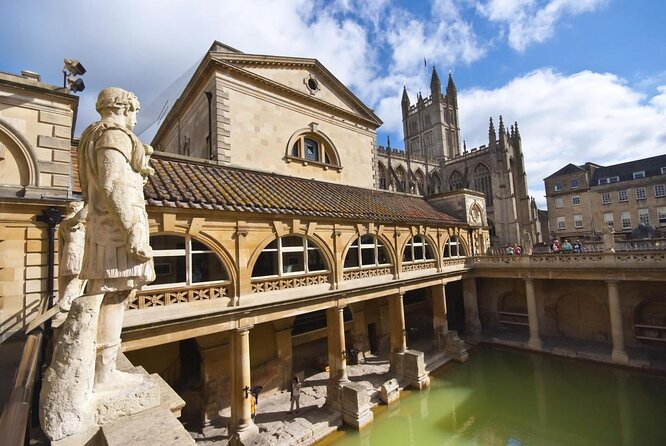
- Bath’s historic landmarks, such as the Royal Crescent and Pulteney Bridge, are iconic symbols of the city’s past and present.
- The timeless beauty and architectural grandeur of these landmarks attract visitors from all over the world.
- The Royal Crescent, designed by John Wood the Younger, is a stunning example of Georgian architecture and a symbol of wealth and prestige in Bath’s history.
- Pulteney Bridge, designed by Robert Adam, is a testament to the architectural brilliance of the Georgian era and a popular spot for travelers and locals.
Overview of Bath’s Historic Landmarks
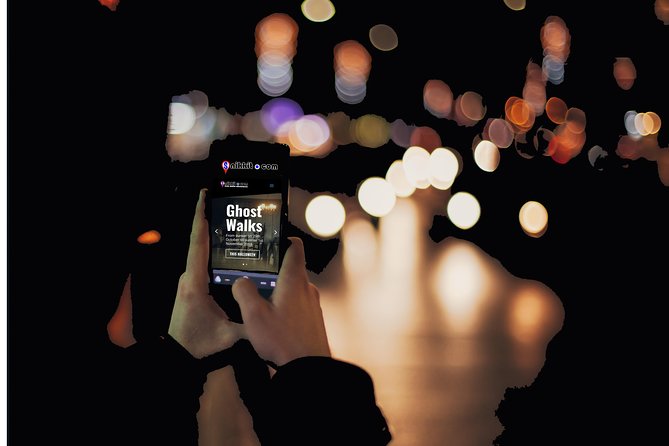
Bath’s historic landmarks offer a captivating glimpse into the city’s rich history and architectural grandeur. With their impressive structures and timeless beauty, these landmarks have become iconic symbols of Bath’s past and present.
One of the most notable landmarks is the Royal Crescent, a magnificent row of Georgian townhouses that showcases the city’s architectural significance. Its elegant design and commanding presence make it a must-see attraction for visitors.
Another landmark of great importance is Pulteney Bridge, an exquisite example of Palladian architecture that spans the River Avon. Its unique design and strategic location make it a popular spot for travelers and locals alike.
These landmarks not only contribute to the city’s charm, but also have a significant impact on tourism, attracting visitors from all over the world who are eager to experience Bath’s historical and architectural treasures.
Interested in exploring Bath on foot? Other walking tours we've covered
Exploring the Royal Crescent
As you stroll along the elegant streets of Bath, a magnificent sight awaits you at the heart of the city – the iconic Royal Crescent. This architectural masterpiece is a testament to Bath’s rich history and grandeur.
The Royal Crescent is a row of 30 terraced houses, designed by the renowned architect John Wood the Younger in the 18th century. Its iconic curved shape and stunning Georgian architecture make it one of the most famous landmarks in Bath.
The significance of the Royal Crescent in Bath’s history can’t be overstated. It was a symbol of wealth and prestige, attracting the social elite and aristocracy of the time.
Today, it stands as a symbol of Bath’s architectural heritage and continues to captivate visitors with its timeless beauty.
Discovering the Iconic Pulteney Bridge
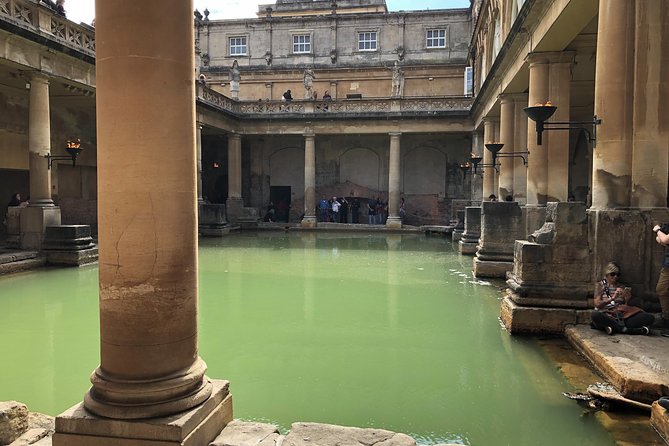
Pulteney Bridge, an iconic landmark in Bath, captures the imagination with its elegant design and historical significance. This stunning bridge, spanning the River Avon, is a testament to the architectural brilliance of the Georgian era.
Designed by Robert Adam and completed in 1774, Pulteney Bridge is one of only four bridges in the world to have shops lining both sides. As you stroll across the bridge, you can admire the rows of charming storefronts, which add a unique charm to the structure.
The bridge was named after Frances Pulteney, the wife of William Johnstone Pulteney, who commissioned its construction. Today, Pulteney Bridge continues to be a bustling hub of activity, with visitors and locals alike drawn to its beauty and history.
Unveiling the Beauty of The Circus
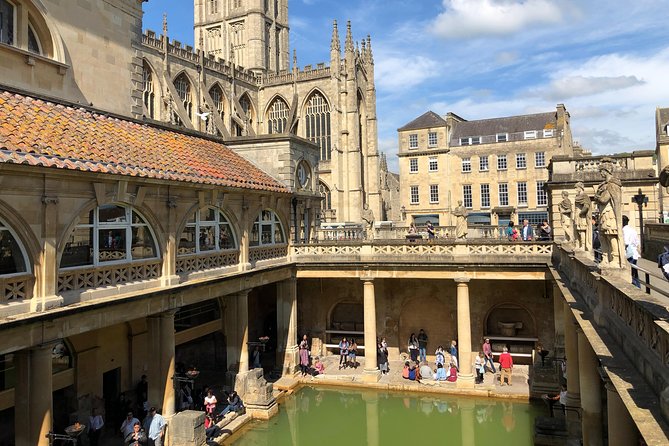
Continuing our exploration of Bath’s architectural wonders, we now turn our attention to The Circus, a captivating masterpiece that showcases the city’s rich history and unique charm. Here, the history and significance of the Circus in Bath come alive through its mesmerizing architectural features.
Imposing Design: The Circus boasts an impressive circular layout, comprising three crescents of stunning Georgian townhouses. This symmetrical design creates a sense of grandeur and elegance.
Architectural Precision: Every detail of The Circus’s architecture has been meticulously crafted. From the intricately carved stonework to the elegant balconies and windows, each element tells a story of Bath’s architectural prowess.
Iconic Landmark: The Circus stands as a testament to the city’s Georgian heritage and is considered one of the finest examples of Georgian architecture in the world. Its iconic presence has made it a popular spot for locals and travelers alike.
Cultural Significance: The Circus has been a source of inspiration for many artists, writers, and architects throughout history. Its beauty and historical significance continue to captivate visitors, offering a glimpse into Bath’s rich cultural heritage.
Delving Into the Rich History of the Roman Baths
The Roman Baths in Bath, England, offer a captivating glimpse into the rich history of this ancient bathing and socializing complex. These architectural marvels were once the center of daily life for the Romans who inhabited the area nearly 2,000 years ago. As visitors explore the site, they’re transported back in time to witness the ancient rituals and customs that took place within these magnificent structures.
The Roman Baths aren’t only a remarkable feat of engineering, but they also hold significant cultural and historical importance. From the grandeur of the Great Bath to the intricacy of the Temple Courtyard, every corner of this complex tells a story of the past.
It’s truly a must-visit destination for anyone interested in delving into the fascinating history of Bath.
Like guided experiences? More Bath tours with local guides
Enjoying the Freedom of a Self-Guided Tour
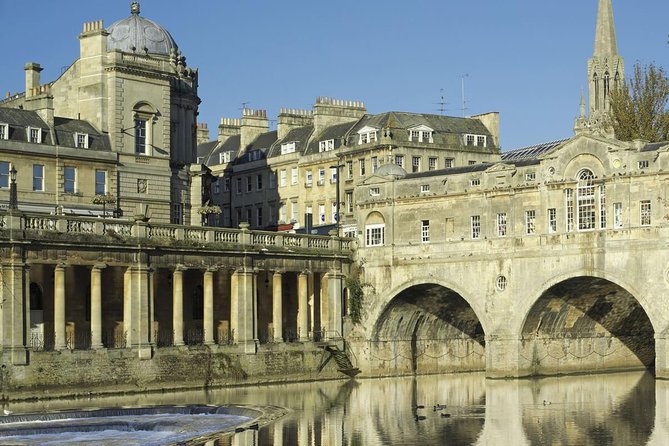
Set out on a self-guided tour of Bath and experience the freedom to explore this historic city at your own pace. Here are a few tips for maximizing your self-guided tour experience:
Flexibility: With a self-guided tour, you have the freedom to choose your own itinerary and spend as much time as you want at each attraction. No rushing or waiting for a group to move on.
Personalization: Swap crowded group tours for a more personalized experience. You can focus on the aspects of Bath that interest you the most, whether it’s the architecture, history, or culture.
Intimacy: Enjoy the space and tranquility of exploring Bath on your own. You can savor the peaceful moments, take in the beauty of the surroundings, and truly connect with the city.
Discover hidden gems: Self-guided tours allow you to stumble upon hidden gems and off-the-beaten-path attractions that may not be included in traditional guided tours. You have the freedom to explore and uncover Bath’s secrets.
With the benefits of self-guided tours and these tips in mind, get ready to embark on a unique and immersive experience in the captivating city of Bath.
Common Questions
How Long Does the Self-Guided Tour of Bath Typically Take?
The average duration of the self-guided tour of Bath is around 2-3 hours. The best time to start is in the morning, allowing plenty of time to explore the city’s stories, histories, and architecture.
Are There Any Additional Fees or Tickets Required to Visit the Historic Landmarks in Bath?
No, there are no additional fees or ticket requirements to visit the historic landmarks in Bath. Visitors can freely explore these sites at their own pace without any extra costs.
Can I Bring My Own Headphones and Smartphone for the Tour?
Yes, participants can bring their own headphones and smartphones for the tour. This allows them to have a personalized audio experience and listen to the tour content at their own convenience.
Are There Any Recommended Routes or Itineraries for the Self-Guided Tour?
There are recommended routes for the self-guided tour that take you to popular attractions in Bath. These routes allow you to explore at your own pace and discover the city’s stories, histories, and architecture.
Can I Start the Self-Guided Tour at a Time Other Than 12:00 Am?
Yes, there are alternative start times for the self-guided tour in Bath, allowing for flexibility in tour timings. This provides visitors with the option to begin their tour at a time other than 12:00 AM.
The Sum Up
To sum it up, a self-guided walking tour in Bath offers visitors the perfect opportunity to enjoy the city’s rich history, stunning architecture, and fascinating stories.
With the freedom to explore at their own pace, travelers can uncover iconic landmarks such as the Royal Crescent, Pulteney Bridge, The Circus, and The Roman Baths.
By providing 48 hours of uninterrupted content, a map and images of the city, and a smartphone with headphones, this tour ensures a personalized and immersive experience in the charming city of Bath.
More Walking Tours in Bath
More Tours in Bath
- Hop on with Jane Austen in Bath : Bus and walking tour
- Stonehenge & More: Secret England Tour for 2-8 guests
- Bath Regency Romance and Scandals Exploration Game and Tour
- Bath: Guided tour of Historic Sights & Pubs
- Bath City Private Historical Walking Tour
- Bath: Guided Tour of Iconic Bridgerton Filming Locations
More Tour Reviews in Bath
- Hop on with Jane Austen in Bath : Bus and walking tour
- Stonehenge & More: Secret England Tour for 2-8 guests
- 30 minutes SOMA Breath Work and Meditation Experience
- Bath Regency Romance and Scandals Exploration Game and Tour
- Bath: Guided tour of Historic Sights & Pubs
- Bath City Private Historical Walking Tour
Looking for something different? Other Bath activities we've written about
- Hop on with Jane Austen in Bath : Bus and walking tour
- Stonehenge & More: Secret England Tour for 2-8 guests
- 30 minutes SOMA Breath Work and Meditation Experience
- Bath Regency Romance and Scandals Exploration Game and Tour
- Bath: Guided tour of Historic Sights & Pubs
- Bath City Private Historical Walking Tour
- Bath: Guided Tour of Iconic Bridgerton Filming Locations
- Bath: Guided Relaxation and Sound Bath
- Bath: No. 1 Royal Crescent House Museum Entry Ticket
- Bath: Herschel Museum of Astronomy Entry Ticket
- Bath: City Walking Tour & Exploration Game
- Bath: Christmas Market and City Highlights Walking Tour
